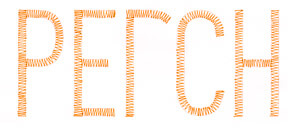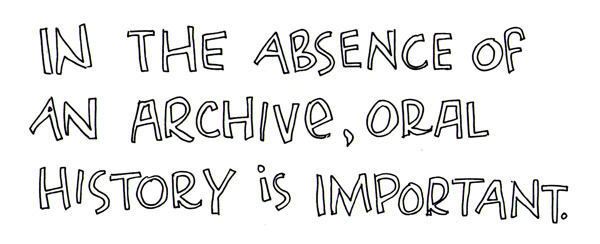We write history to understand how things were and what makes them the way they are today. To write history is to explain the cause and effect relationship of events, to script the roles of its protagonists and their part in the story of things. All histories – any histories – account for the agencies of people, places and processes in the making of the present.
Design history is no different from the history of a people or a nation. In fact, design history can be considered to be a part of a larger histories. Design practice is concerned with culture, society, science and politics, so it makes complete sense that the all of these disciplines were of concern to the design historians gathered at the annual Design History Society conference recently concluded at the National Institute of Design, Ahmedabad. The topic of the 4 day symposium was “Towards Global Histories of Design: Post-colonial Perspectives”. One of the dominant themes to emerge from the papers and discussions was the concept of a national design identity, the challenges in writing about it and the complexities one must consider in order to address it.
Here in India we too are fond of arguing about what constitutes “Indian Design” – what are its elements, who is practising it and how to define it. While I personally prefer the phrase “design in India” – which would include the Indian and non-Indian, the Designers and the makers of designed things – the proceedings of the DHS conference got me thinking about the logic of history; of the relationship between the writers of history and the tellers of stories; of the things that are written about; and of the importance of the idea of being “post-colonial”. Here are some of my takeaways from the 3 days.
1. In the absence of an archive, oral history is important.
We Indians seem to have a poor habit of keeping records. As any design historian will testify, we have scant documentation of post-independence design, little or no critical writing and certainly no museum-like institution. What we might lack in the form of an archive, however, we can make up in the rich memories of the characters that have dotted the design landscape in the last 50 years. If one were to start writing a history today, one need only talk to the first professors of IIT-IDC for example or the students who were entrusted with Pupul Jayakar’s first crafts initiatives – so many are still alive. We might do well to keep their memories alive for the future.
2. We need many histories.
In looking for India’s design identity, one is always confounded by its rich diversity of language, culture and tradition. Perhaps diversity is the national idiom and the character of creative work in this geography. Every project, every institution, every design studio here brings together people from multiple backgrounds. This is true now more than ever before thanks to telecommunications and networks that allow us to participate in projects across geographies and time zones. In writing about Indian design history then, one can write about the makers, users, technicians, entrepreneurs, bureaucrats and artists who have been a part of the industry, and one can also write the story from their perspective. A pluralist approach to writing history can be sensitive and inclusive. It can engage with the complexities of social, economic and cultural circumstances in order to capture the vibrant energy of the region in a truer, more authentic way.
3. You can’t know where you’re going, unless you know where you’ve been.
Upon graduating from design school some years ago, I realised like I joined the industry without a clear idea of what lay before me. I felt alone, unable to figure out what an exhibition designer was supposed to do with her career. Many young graduates I’ve spoken to of late feel like they’re re-inventing the wheel and figuring it out afresh. The feeling that design is a nascent profession in India continues to persist even today, fifty years after the first professional education programmes began. The profession needs to evolve but that can only come from a continuous line of development: from a progression of education, thought and practice. Unfortunately, this is hardly the case: without a sene of what has gone before us, we’re unable to chart a course for the future; and without historical case studies from which to learn best practices, we end up developing our practices within narrow capacities, rather than as a collective, because we have no shared knowledge bank or common reference points. This is where design histories can make sense of the vast and varied kinds of work that have been produced and are being produced today. Dedicated design writing, research, publications – even a design museum – can create a foundation for design thought and practice to evolve from one generation to the next. The way to the future, is through the past.
4. Design History = Design Culture
With a design community clustered in small pockets like Delhi, Bangalore and Mumbai, it can often feel like the design industry is insignificant and localised when, in fact, there is a great deal of work being done across the length and the breadth of the country. People have always applied themselves creatively to problems and projects, but with a lack of publishing and media, their stories have largely gone unwritten. Were we to research design history, record it as it is made, study it as it is written, I don’t doubt that we would find that designers are greater in number than we think we are, do more impactful work than we believe and can learn a lot from creative minds that may not be “trained”, but live and breathe our profession just the same.
Looking for an idiom of “Indian Design” is to oversimplify the task: what we could be looking for, instead is a way of finding commonality of purpose and conviction among others in the design field and use that to fuel a sense of identity. Culture is what we all have in common, but it is also what makes us different. We need history to show us these similarities and uniqueness. Then perhaps, we can begin to see and sense our design culture as it already exists.
5. “We must accept that we were once colonised” – Rathna Ramanathan
To be colonised is not simply to become a geographic outpost of another country, it is also to be colonised by another culture, by another world-view. In India, our creative practitioners have been colonised many times: by art educators who established the first art schools along the lines of the “best in Europe”; by the first modernist architects and designers who planted their philosophy in the nebulous context of a newly formed nation; and more recently by the droves of Westerners telling Indian designers how to design for the “real” India.
Yes, we need to discover design methods for our own unique contexts, but we must accept that our design education and forms of practice have been borrowed from other models. While using the structure that these provide, we can build our own approaches, conscious of the foundation, without being weighed down by it. This awareness that “we were once colonised” will enable us to be self-reflexive, comfortable with our identity and our position in matters of global concern. Accepting this and growing from it is a sure way to build confidence in our creative talents.
*
At Perch, we belive we’re doing our bit by recording contemporary conversation about design in India. We try to capture the mood and essence of these conversations, using our observations to build our practice. To us, writing is a form of self-reflexion – a way to understand history as it is being made in our time, in our space.
What do you think? Is design history relevant to the contemporary designer?







5 comments
Prof Jonathan M Woodham says:
Mar 7, 2014
Although unable to participate in the Design History Conference at the NID Ahmedabad last year (due to serious illness)I would be interested to know more aout the levels of design history research on Indian design since independence. There are many uniquely Indian products, many of them industrially produced, that largely remain hidden from view. I would be grateful to know more. I have visited India and have looked at design education and its history, having visited the NID and the Design Centre at IIT Bombay and met the very helpful directors and other senior academics.
Prashanthi Yellapragada says:
Nov 30, 2014
Very interesting.I loved reading this article for the kind of questions it raised while i was going through it….
I would like to add a small point i felt could be relevant to this article.
I have generally observed that most Indians related to the field of design tend to think and argue, that Indian Design history mainly comprises of our arts and crafts, and their related history. I often wonder if that is so…(If so , then where does ‘Jugaad’ fit into?)… is there more to Indian Design and its Design History.
Also , could this kind of narrow-minded( in need of a better word) thought process inhibit us from making efforts to record the events related to Indian Design, even in the present scenario?
Would like to know your views on the same.
ruchita says:
Dec 4, 2014
Hi Prashanth,
I think that when historians write on design, they need to pick a particular lens through which to view it – otherwise there would be too much information and not enough focussed criticism. Rather than “narrow minded”, I would say they are being “focussed”. In choosing this viewpoint, it is possible that many historians have looked at the arts and crafts angle more than contemporary desig. There is nothing wrong with that, because it is true that we need to value our arts and crafts more and more in a time of mass consumption and factory-made goods.
I would also say that the selective subjects are because our design histories have not been written by contemporary Indians, they have been written by foreign academics. These people have written what they are interested in and no one should be obliged to write about “everything” or the whole of “indian design”. It’s not possible for a single person or even a single generation to do that. If at all, we Indians have to write about what we think must be remembered.
There is as much to design history as we choose to talk about. Which is why it is so important for many, many different people with different opinions to write. The more we write, the more ideas are shared, the more interpretations are available, the more fields are covered. My hope is that we welcome debates, discussions and develop better research by more nuance critical writing.
Prashanthi says:
Dec 15, 2014
Hey! thanks for sharing your viewpoint. I agree with the use of the word focussed as compared to narrow-minded.
Gavin O'Brien says:
Sep 22, 2015
Hi,
I was a delegate at the conference you mentioned but have yet to see a copy of the proceedings.
Would love to read these some time.
Any chance you can send me a link?, no reply from NID (despite a couple of requests).
Cheers (and nice to read your perspectives on Indian Design History),
Gavin
gavin.obrien@op.ac.nz